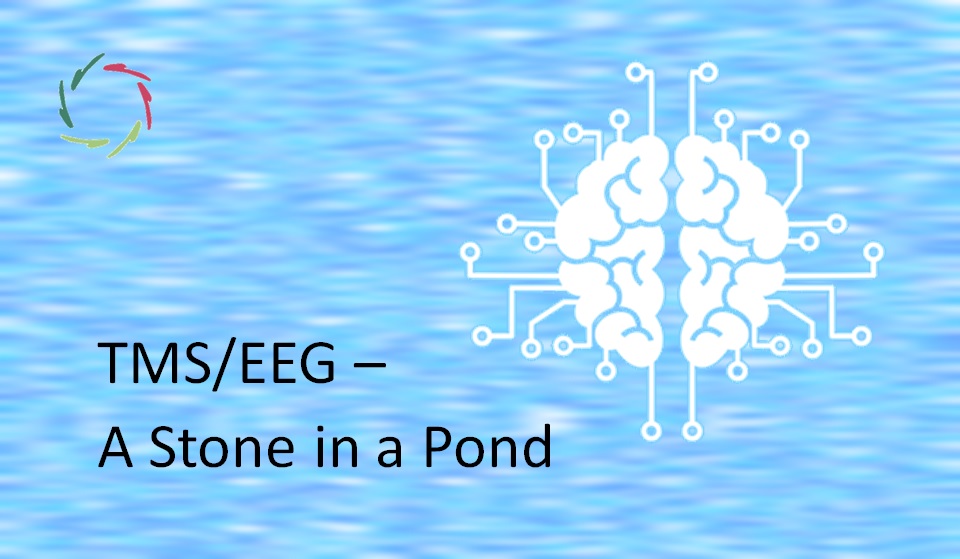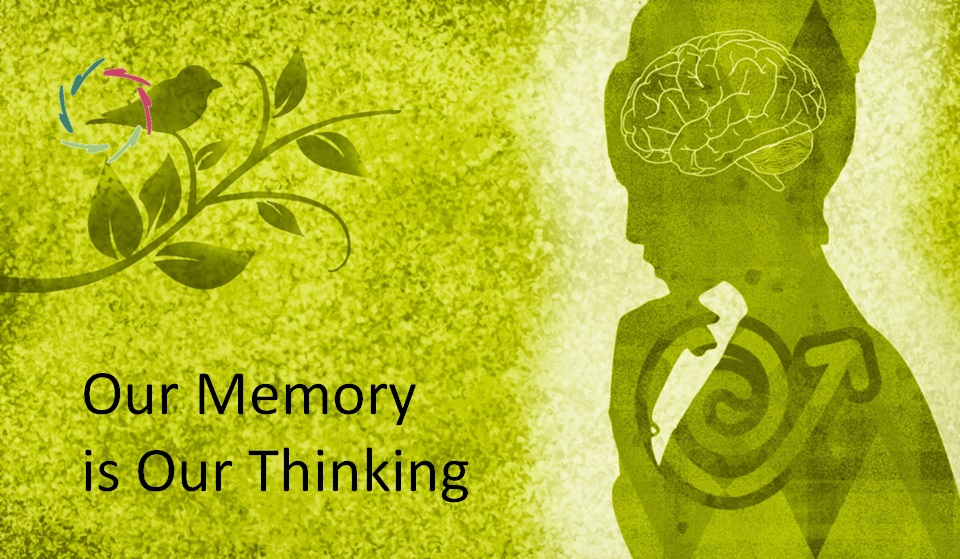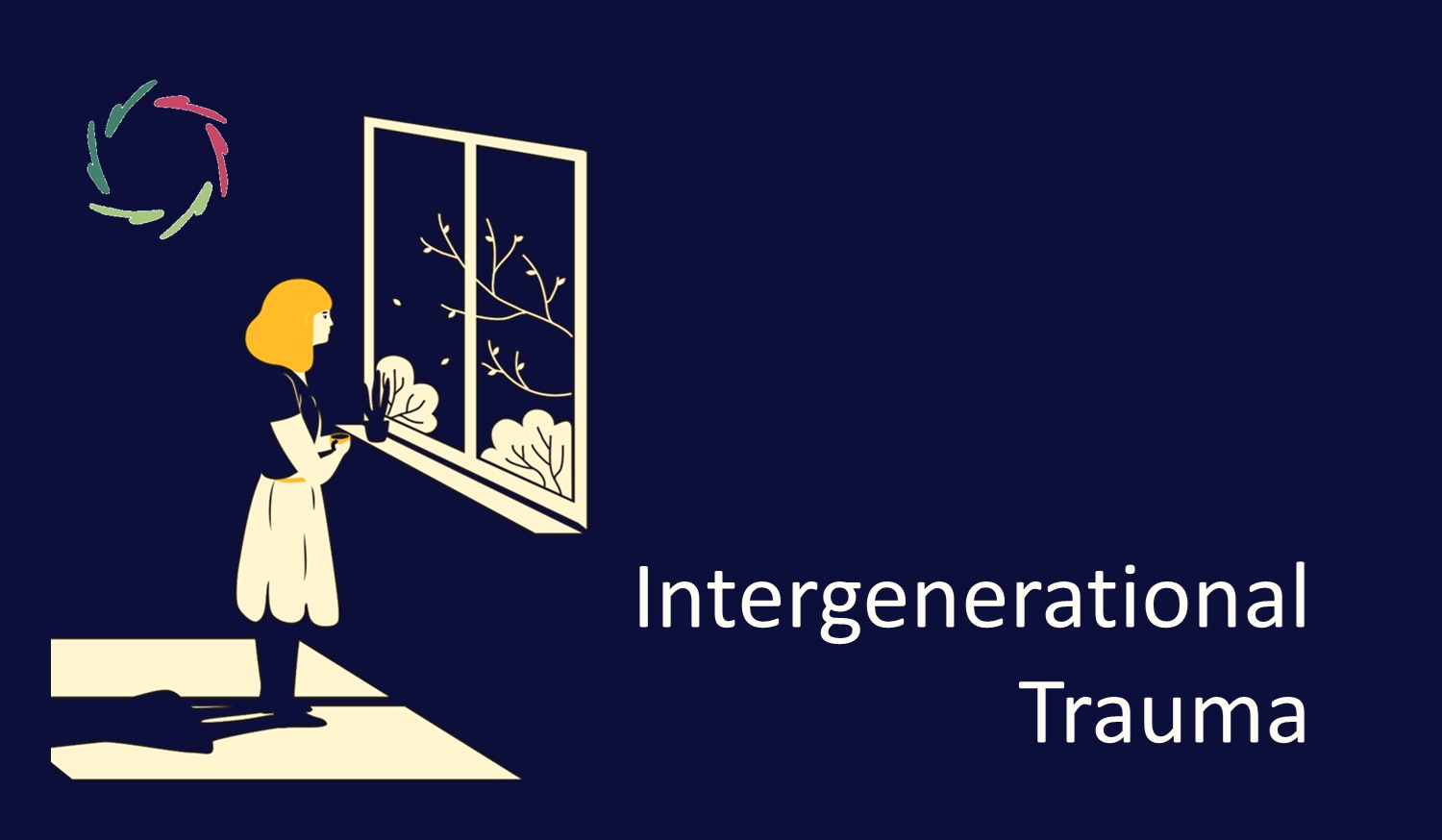TMS/EEG – A Stone in a Pond

TMS = Transcranial Magnetic Stimulation (giving a magnetic pulse through the skull to the brain in a specific region). EEG = Electro-Encephalo-Graphy (recording voltage changes over brain regions). TMS is like throwing a stone in a pond (the brain). EEG is like looking at how the pond responds.
This is probably the most interesting set of experiments throwing light on the phenomenon of consciousness and the question, “How can I be conscious?” Note that this does not contradict the feeling of consciousness. The way we experience it (this is, specifically become conscious of it) is indeed a feeling.
The experiments
(excerpt from my book: The Journey Towards Compassionate A.I.)
Marcello Massimini, Giulio Tononi, and their colleagues measured the span of brain integration in normal subjects who are awake, in sleeping subjects (deep sleep), in patients under anesthesia, and in vegetative-state patients.
They applied TMS pulses to the parietal (top rear of head) or frontal (forehead) brain lobes of each subject, while recording their EEGs. The results were unambiguous. All subjects who were in a state of low to very low consciousness had simple and local EEG responses. It was usually a slow, single positive-negative wave, when they had any response at all. That is, little complexity, little integration, no consciousness. Conscious subjects had much more complex EEG recordings over much larger areas of the brain [Massimini et al., 2018].
First conclusion: Open complexity and integration of several brain regions are necessary for consciousness.
Second conclusion: Open complexity and integration are gradual phenomena, and so is consciousness. There is no all or nothing, no sudden magical appearance of consciousness. Note that we can see this also in the natural evolution of species.
Yet another conclusion of the experiments is equally important:
Not one part of the cerebrum (relevant part of the brain) seems specifically necessary for consciousness.
[For insiders: Some parts of the brain (mainly in the brainstem) are, indeed, specifically necessary. However, consciousness does not originate here. They act like a door.]
As M.S. Gazzaniga puts it:
“Since we were finding specialized capacities in all different regions of the brain and since we had seen that conscious experience was closely associated with the part of the cortex involved with a capacity, we came to understand that consciousness is distributed everywhere across the brain. … I am suggesting that the brain has all kinds of local consciousness systems, a constellation of them, which are enabling consciousness. Although the feelings of consciousness appear to be unified to you, they are given form by these vastly separate systems. Whichever notion you happened to be conscious of at a particular moment is the one that comes bubbling up, the one that becomes dominant.” [Gazzaniga et al., 2011]
So, together: The mind/brain realizes consciousness like an orchestra without a conductor.
In this doing also lies the being. Consciousness is the doing of the orchestra in which, for instance, the frontal cortex is one of the players, not the conductor as many people believe. Top-level science has debunked the conductor.
The music is heard from the outside, like listening to the orchestra or seeing someone being and acting consciously.
If it sounds like a duck, looks like a duck, and moves like a duck, it is a duck until proven otherwise.
More formally
(excerpt from my book: The Journey Towards Compassionate A.I.)
Consciousness does not arise from specific regions but from highly networked neurons within and across many regions. Local properties of the brain cortex mediate specific contents of consciousness. Global properties are critical for sustaining consciousness as we know it in daily life. For instance, a reverberatory feedback loop can be established between
- neurons in higher-order sensory regions of the cerebral cortex (in the case of vision, the inferior temporal cortex),
- their targets in the prefrontal cortex, and
- reaching with their axons back into the inferior temporal cortex.
When this maintains itself, consciousness can arise [Koch, 2012].
Then again, consciousness can be present even after massive frontal lesions. For example, neither large bilateral prefrontal resections, nor leucotomy in which the prefrontal cortex is cut off from the thalamus, impairs consciousness [Fulton, 1949].
Soon enough, the consciousness question can be asked by an A.I.
Of course, it will have better introspection than we do. Thus, it can leave out magic from the start.
Just out of curiosity, it might shut down part of itself and see what this does to its feeling/being conscious. Actually, that is the equivalent of our TMS/EEG experiments. Shutting down different parts of itself, our interested A.I.-system may feel that it keeps being conscious, only in different ways — just like our equivalent. Suppose it gradually shuts down much of itself. In that case, it may feel its consciousness gradually diminishing until it turns itself back to normal. The latter may also be done gradually and, with enough resources, till far beyond what we can see as the human level.
In another self-experiment, it might split itself into two separate systems (not recommended), then there would be two consciousnesses. This is the equivalent of human split-brain experiences.
No magic is required.
We should know ourselves better.
We do have the knowledge. At least enough of it is already available.
But where is the wisdom to deal with it?
―
Bibliography
[Fulton, 1949] Fulton, J.F. Functional Localization in Relation to Frontal Lobotomy. Oxford – Oxford University Press, 1949
[Gazzaniga et al., 2011] Michael S. Gazzaniga, Pete Larkin. Who’s in Charge: Free Will and the Science of the Brain – Ecco, 2011
[Koch, 2012] Christof Koch. Consciousness Confessions of a Romantic Reductionist – The MIT Press, 2012
[Massimini et al., 2018] Marcello Massimini, Giulio Tononi, Frances Andersen. Sizing up Consciousness: Towards an objective measure of the capacity for experience – OUP Oxford, 2018


